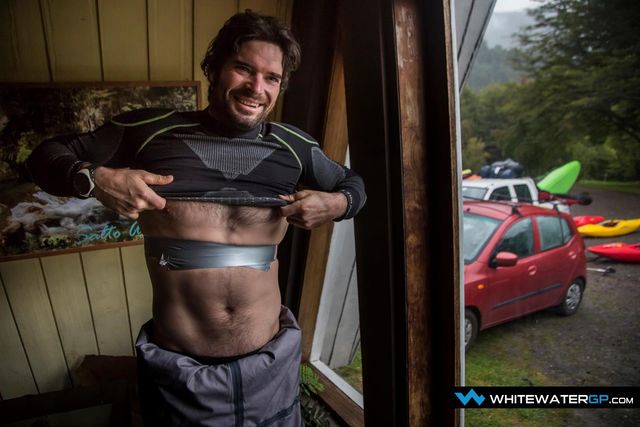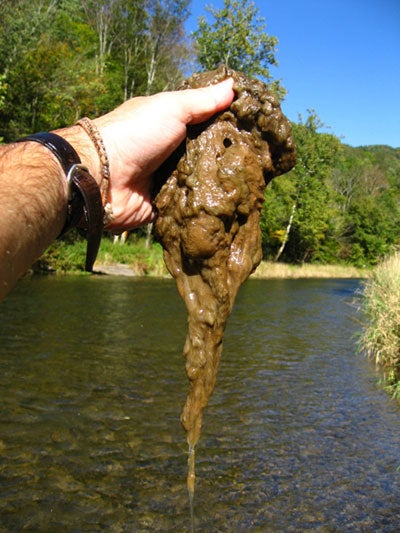
Medical care before the first official run of the in Chile took the form of duct tape. After France’s Eric Deguil, a two-time champion, hurt his ribs paddling through a trial run of the mile-long enduro whitewater race on the Rio Gol Gol, he decided to wrap a band of the multipurpose stuff around his torso for a quick fix. Apparently, it worked well enough. He led the standings after the first official run in the enduro whitewater race. On the second and final run, completed yesterday, 25 other male competitors had a chance to best the Frenchman's fastest time.
It's unclear whether DeGuil's ribs got the better of him on the second run, but the other competitors were able to knock him down to sixth place. The top five male finishers for the day were:
1st Place: Mike Dawson (NZL) 4:22.89
2nd Place: Isaac Levinson (USA) 4:27.61
3rd Place: Dane Jackson (USA) 4:33.40
4th Place: Evan Garcia (USA) 4:34.41
5th Place: Michele Ramazza (ITL) 4:36.69
The top five female finishers were:
1st Place: Nouria Newman (FRA) 5:00.76
2nd Place: Martina Wegman (NLD) 5:08.55
3rd Place: Katrina Van Wijk (CAN) 5:25.82
4th Place: Natalie Anderson (USA) 5:33.64
5th Place: Louise Jull (NZL) 5:41.14
The is the brainchild of kayaker Patrick Camblin, who has created five events that will have 33 boaters competing against each other down some of the planet's most extreme whitewater. Camblin is looking to get more eyeballs—a�Ի� sponsors—for his sport by putting up huck-heavy photos and videos of competitors dropping off waterfalls and navigating Class V rapids. He's been able to attract the in whitewater kayaking to some of the world's most difficult runs without prize money or sponsors, a reality that he hopes will change.
The next four events include a big-water boatercross, whitewater sprint, giant slalom, and a whitewater enduro race on the Futaleufu River, according to . The from organizers in Chile shows Isaac Holden scouting the Rio Truful Truful for Stage 2. Holden and others from checked out the river for Camblin after government officials to the Rio Fuy because of the presence of a spreading algae called .
The invasive species, also known as rock snot, attaches to plants and rocks, creating a matted surface that and disrupts the ecology of previously clean streambeds. Slightly moist Didymo can survive on fishing equipment, waders, lifevests, and boats , and has been introduced from the Northern Hemisphere to areas such as New Zealand and Chile. To prevent further spread, officials often ask recreational water users to or altogether ban them from affected waterways. Such mitigations can be considered a duct-tape fix for the environment, because, currently, there is for getting rid of Didymo.

—Joe Spring